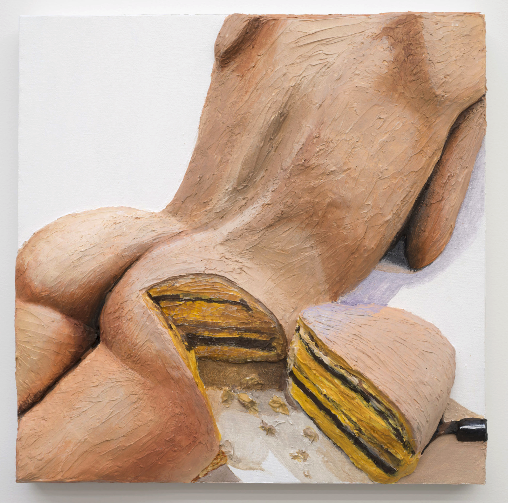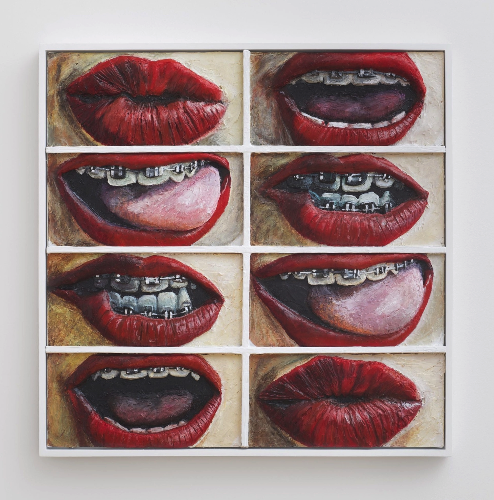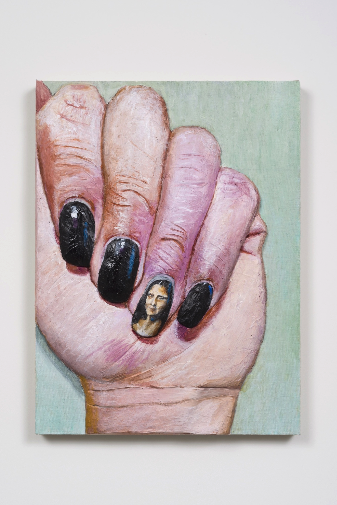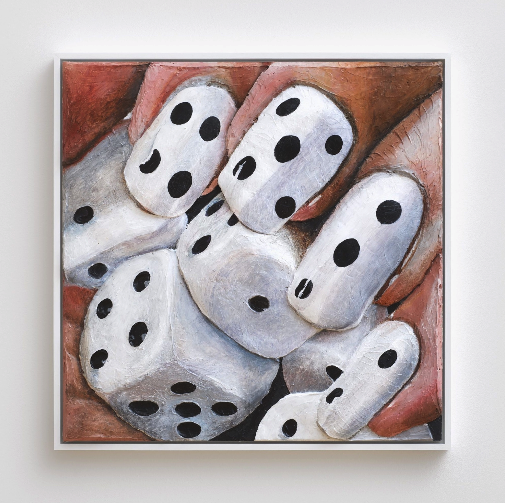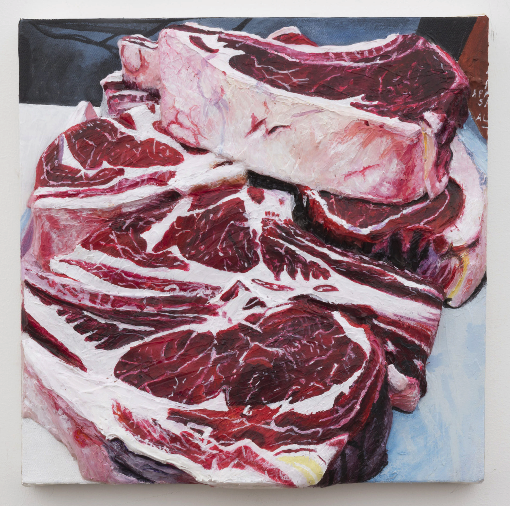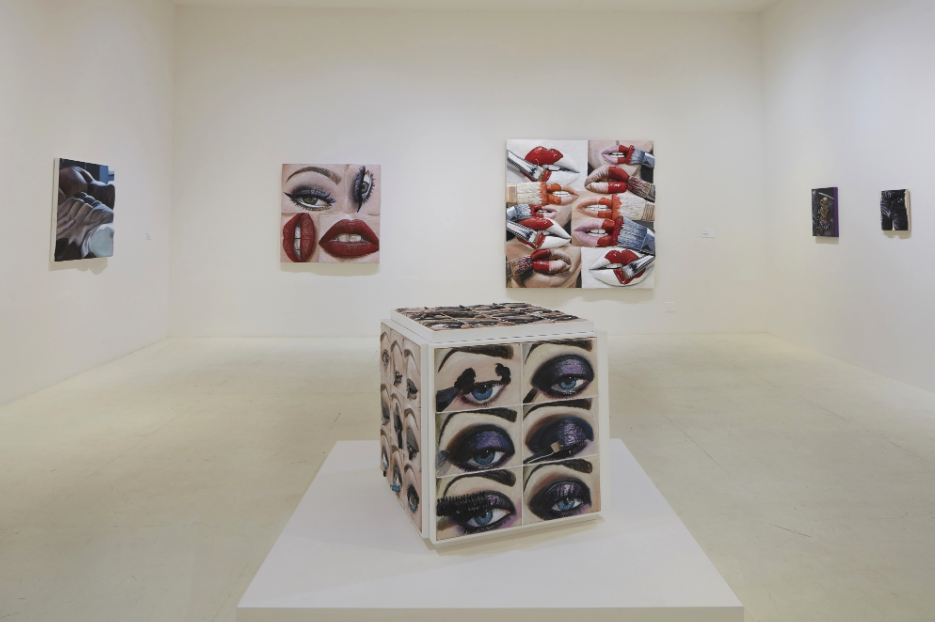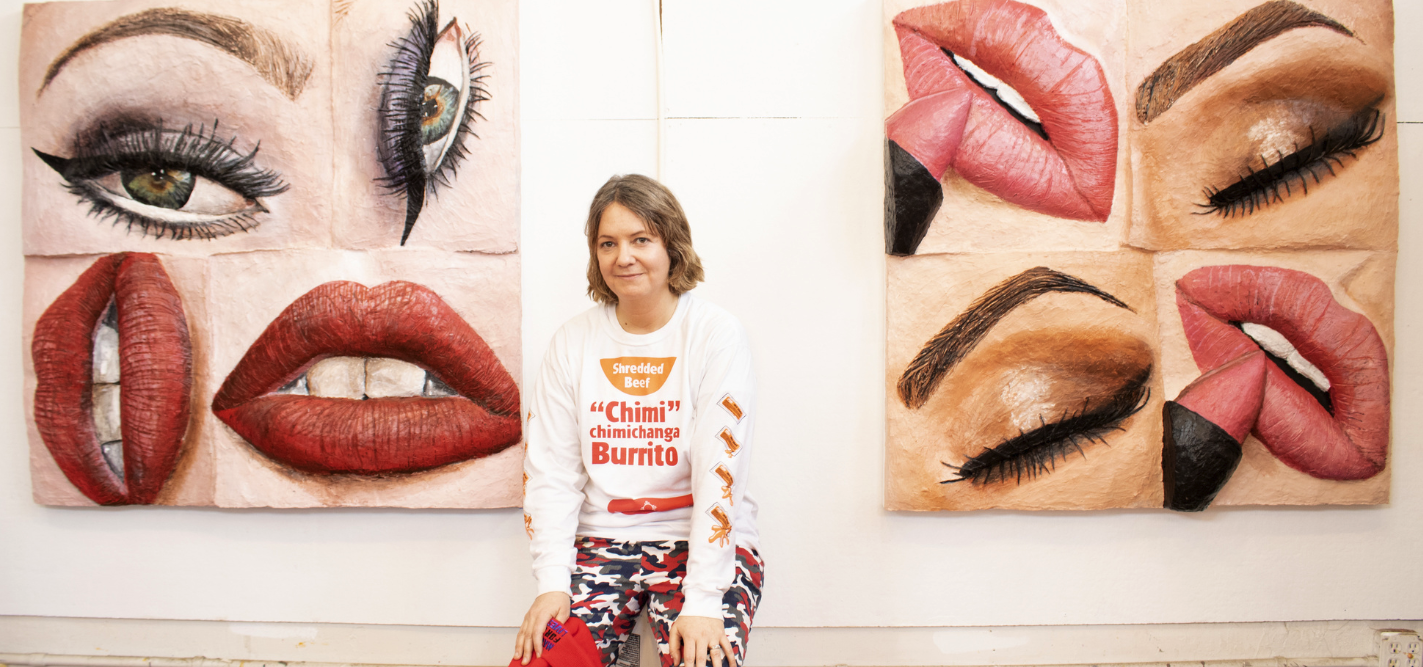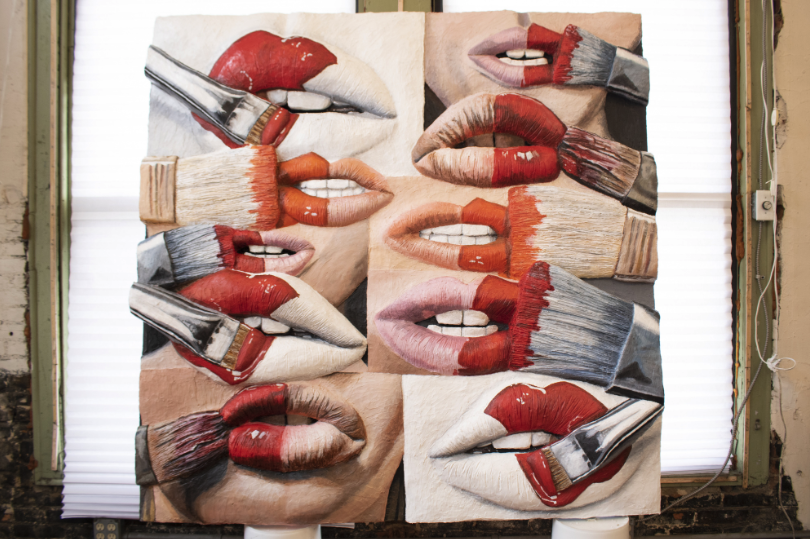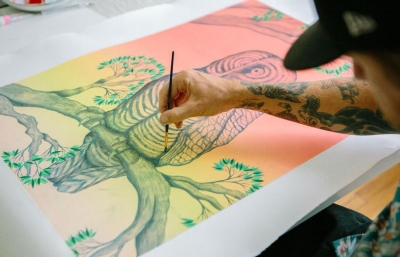"I don't really know how to talk about identity without talking about consumption," Gina Beavers told curator Oliver Shultz on the eve of her first museum show, The Life I Deserve, now on view at MoMA Ps1. Through a studio visit, the artist continued, "I don't know how to talk about this existence without talking about consumption, and so I think that's the element in consuming other people's images. That's where that's embedded. We have to start with consumption if we're going to talk about who we are. That's the bedrock—especially as an American."

In her visceral, vexing, often grotesque paintings, New York–based Gina Beavers takes digital images from social media and transforms into thickly layered compositions bordering onto sculpture. Across a recurring repertoire of subject matter―from photos hashtagged #FoodPorn to step-by-step cosmetics tutorials―Beavers's work offers uncanny and often unsettling visions of our digitally mediated lives.
Built through dense accumulations of acrylic medium or foam and imbued with almost cinematic color, Beavers's works are at once repulsive and alluring, highlighting the gap between our digital and physical lives and how we consume, desire, and fashion ourselves to reflect contemporary culture. Deriving their titles from the captions or comments that originally accompanied her source imagery, Beavers actively anticipates that her works will be posted, shared, and re-shared across online platforms. Although composed from social media streams and destined to be reabsorbed by them, the stubborn materiality of Beavers's paintings resists the logic of digital reproduction.
The Life I Deserve opens with a selection of “food porn” paintings, from slabs of raw meat to a rainbow-colored soft-serve cone, which allude both directly and indirectly to the body, pointing both to literal and virtual modes of consumption and desire. A small central gallery grapples with consumer culture in a different way: each exhibit the artist's interest in the history of painting as filtered through mashups of art and kitsch: fingernails painted with reproductions of art-historical masterworks like the Mona Lisa and Van Gogh's Starry Night rendered in bacon. The exhibition concludes with a gallery focused on Beavers's representation of the human body, pointing to the often troubling politics of selfhood in the emotional and social spaces of the Internet.

